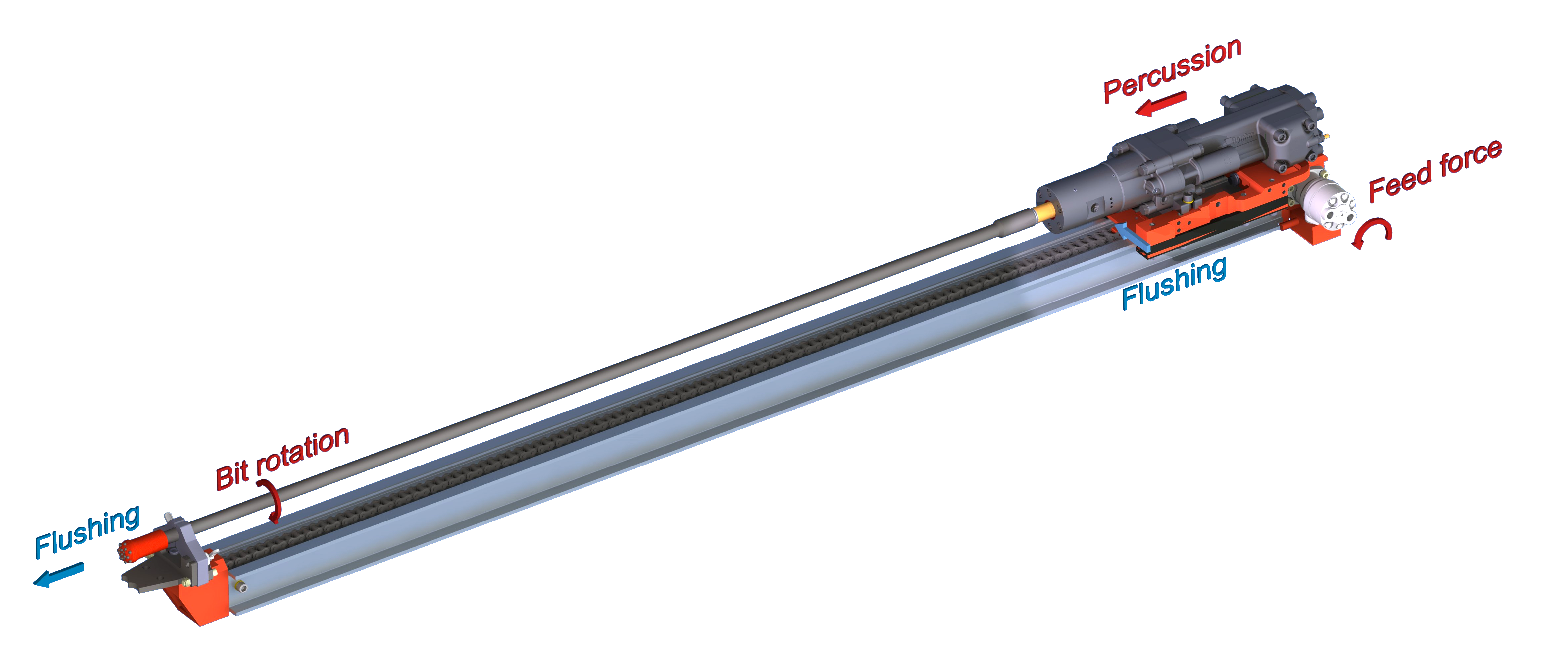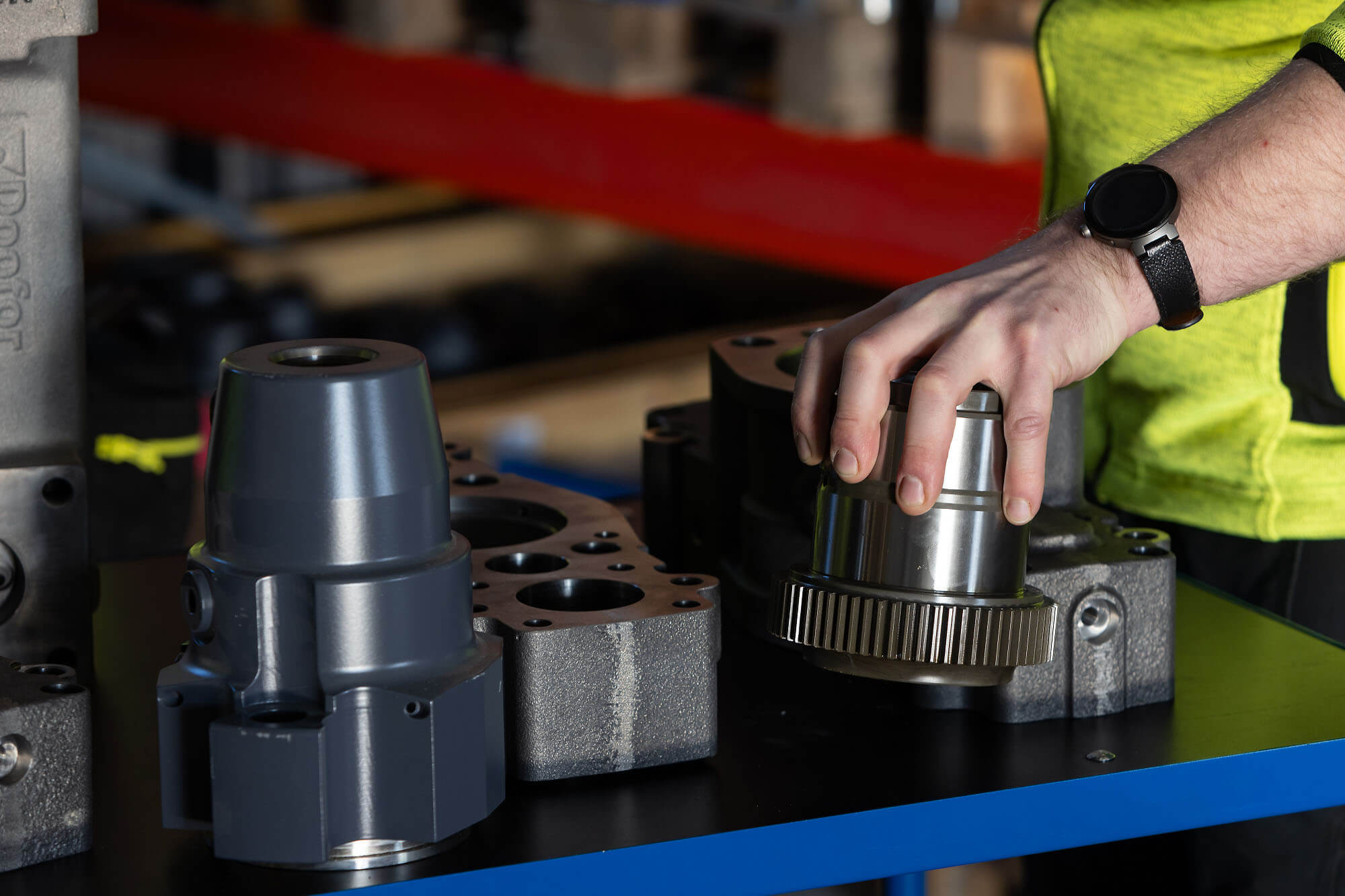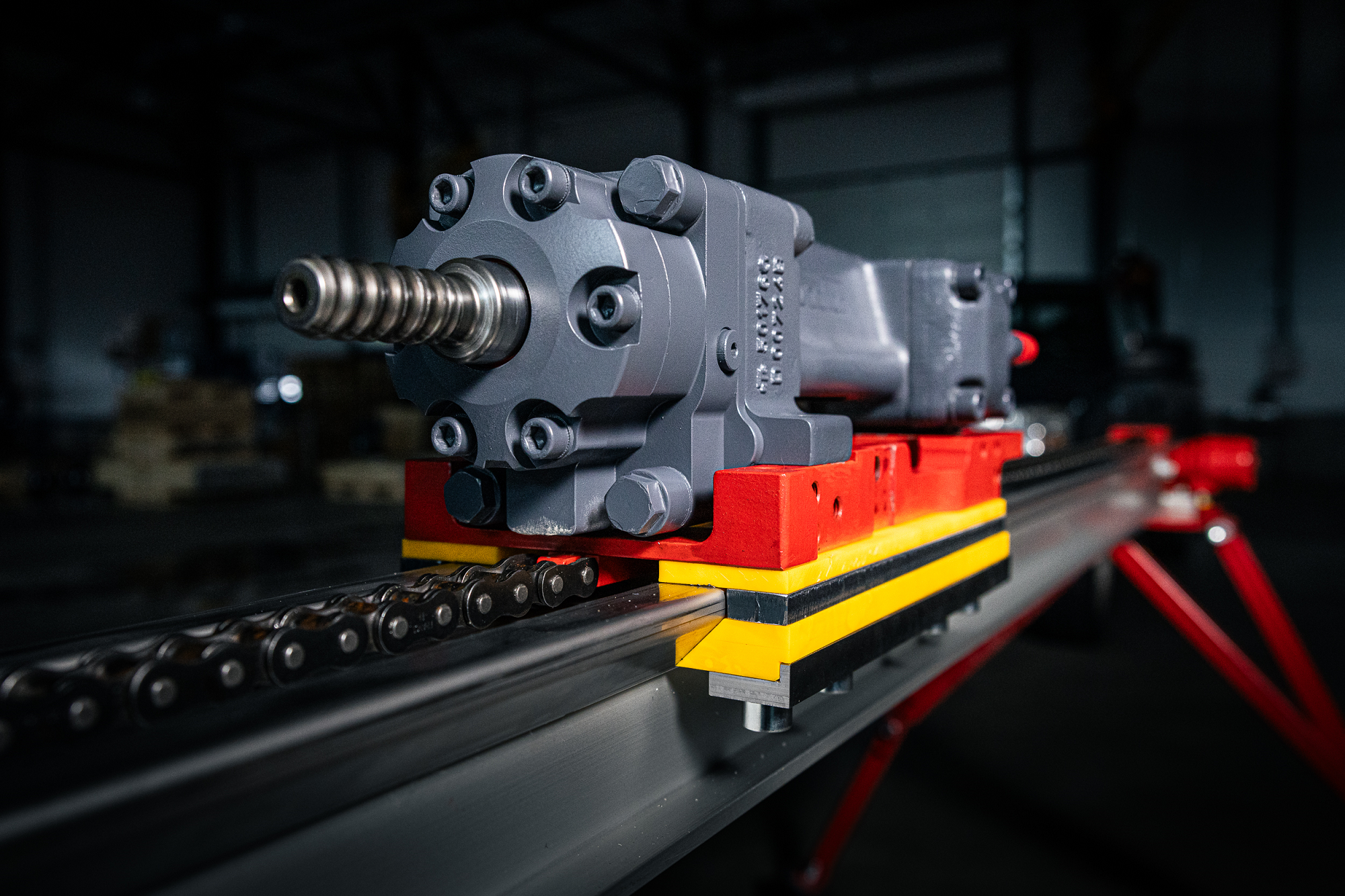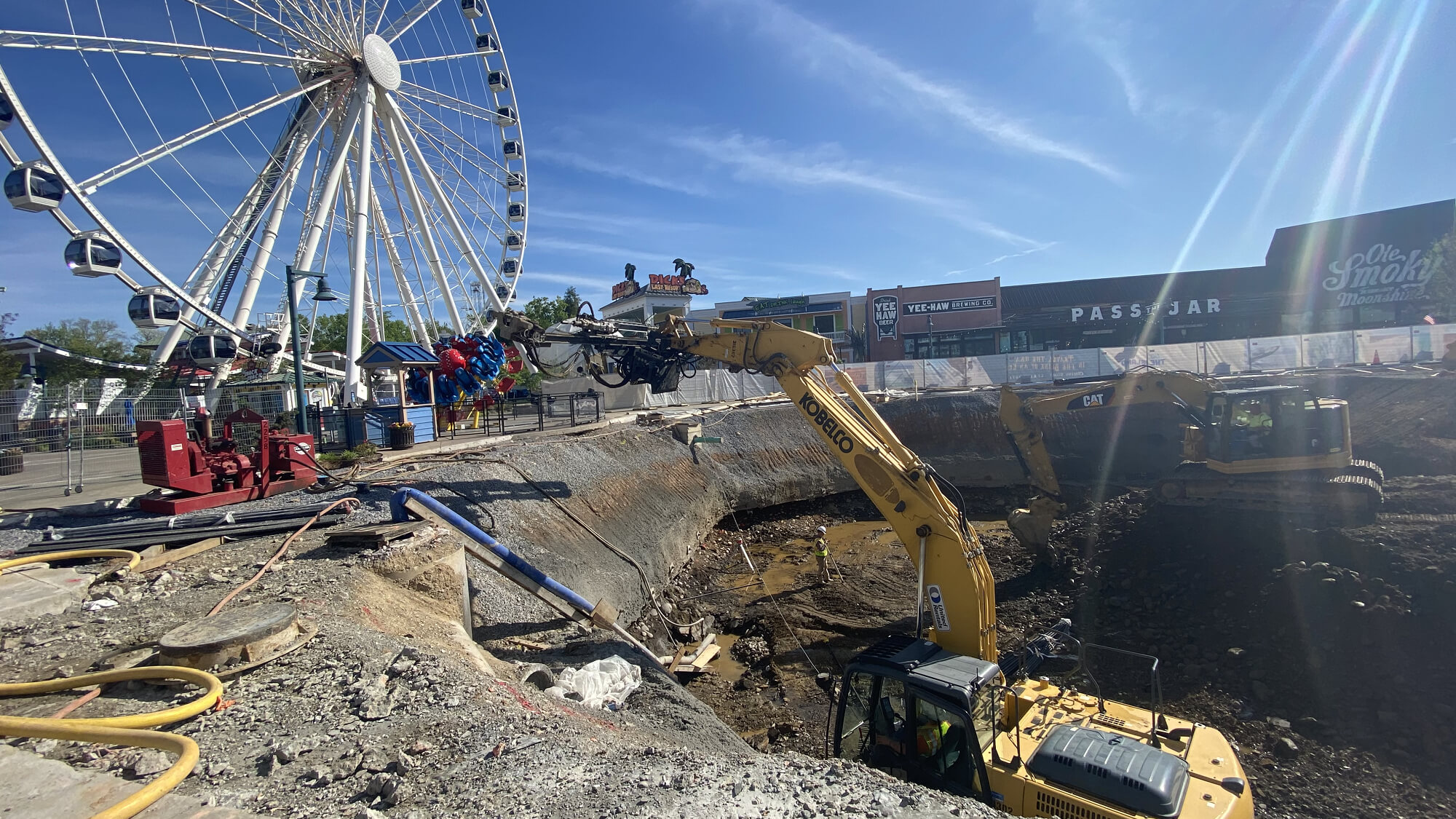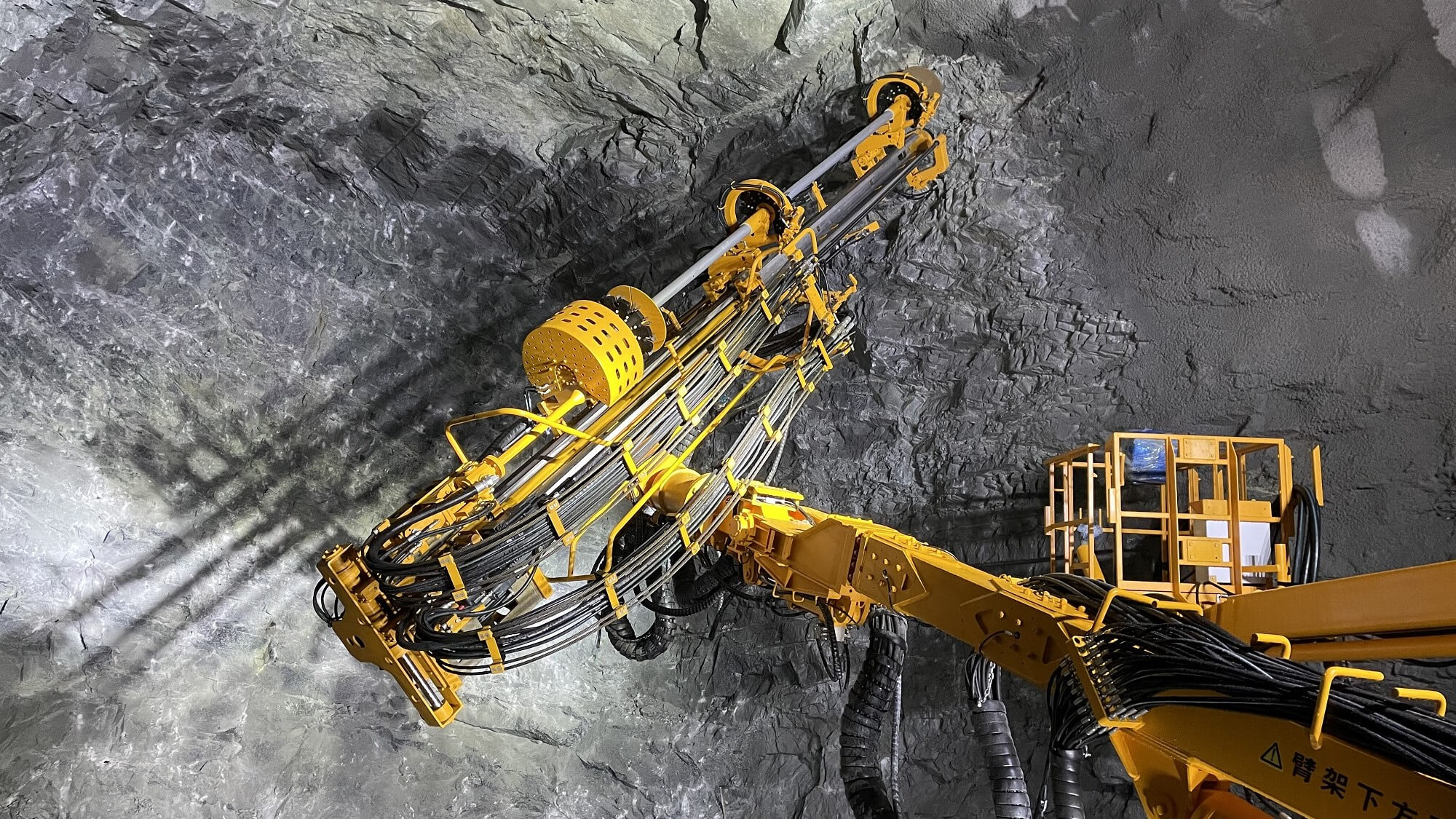Rock drilling technology has undergone a significant transformation over the decades, shifting from traditional, labour-intensive methods to the more mechanised and technologically advanced approaches that dominate the industry today. One pivotal innovation in this field is hydraulic percussive rock drilling.
This reliable technology, which was introduced in the 1970s, employs hydraulic power, independent rotation, and separate flushing systems to drill through hard rock formations. Hydraulic rock drilling delivers superior accuracy, automation, and efficiency, making it fundamental to the operations of drill rig manufacturers worldwide.
Breaking it down — the working principles of hydraulic rock drilling
Hydraulic rock drilling is also known as top hammer rock drilling or rotation-percussive rock drilling. This refers to the process where hydraulic energy is converted into a powerful mechanical force to impact the drill bit or tool.
Four essential components collaborate to harness and utilize energy for rock excavation. The piston, acting as the primary energy converter, transforms various energy sources into mechanical force. The shank adapter efficiently transmits impact energy and rotation torque.
Rods or tubes serve as conduits for energy transfer, and the bit takes the lead in mechanically attacking the rock for successful penetration. Together, these components enable effective rock excavation.
| Percussion power | determines the force applied when the drill bit strikes the rock, a critical factor for penetration. |
| Feed force | controls downward pressure on the drill bit, aiding contact with the rock surface. |
| Bit rotation | allows precise control over the drill bit’s rotation for accurate hole placement and directional drilling. |
| Flushing systems | ensure prompt debris removal, preventing clogs and maintaining drilling efficiency. |
From mines to infrastructure — rock solid solutions for diverse industries
Hydraulic percussive rock drilling finds its niche in diverse industries and applications. Its primary function revolves around rock excavation, and drill and blast techniques, wherein multiple holes are drilled before being detonated using explosive materials.
These applications span various sectors, including underground and surface mining, dimensional stone extraction, civil engineering, and industrial uses.
Around the globe, hydraulic percussive drilling allows for the safe and efficient extraction of resources, serves as the foundation of monumental construction projects, and enables successful exploratory excavations.
Top advantages — how hydraulic rock drilling hits the mark
Hydraulic percussive rock drilling stands out among drilling methods like pneumatic drilling and down-the-hole (DTH) hammering, particularly when working with drill holes or bit sizes ranging from 30 to 150 millimetres. Its numerous benefits make it a preferred choice for a wide range of excavation tasks:
Efficiency: Hydraulic drilling offers high speeds that could reduce project timelines and costs.
Energy efficiency: Even though it demands substantial power, hydraulic drilling maximizes energy output-input ratios for long-term cost-effectiveness.
Minimal maintenance: Compact designs lead to extended maintenance intervals and reduced component wear, minimizing downtime and expenses.
Versatility: Adaptable to various rock types and geological conditions, enhancing flexibility for different excavation tasks.
The industry’s current trends prioritize enhancing drilling speed, efficiency, and tooling for larger hole sizes, all while increasing the power of hydraulic rock drills. Innovations are not limited to performance alone; they also focus on improving protective features for drill steel, reducing maintenance intervals, and designing more compact, efficient products.
We know the drill — Doofor offers customised solutions, easy setup, and durable products
Doofor’s hydraulic percussive rock drills offer you precision and efficiency in your industrial excavation projects. Our compact drills are easy to install, designed for maximum input-output efficiency, and help you optimize drill steel usage while delivering reliable performance.
We are committed to tailoring solutions to your needs — be it retrofitting for existing rigs or customized solutions for specific projects. Our commitment to durability ensures rock drills perform impeccably even in challenging environments and corrosive conditions and offer a good service life with longer maintenance intervals.
If you want to learn more about Doofor’s rock drill offerings, check out our products page.
